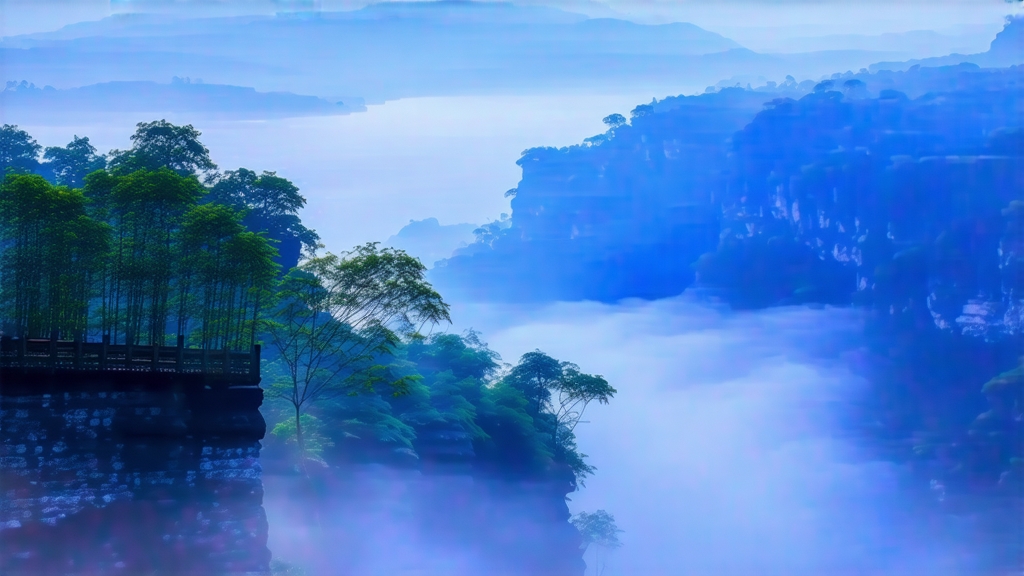
When Chinese tea lovers whisper the words “Da Hong Pao,” they are not simply naming a tea; they are invoking a legend carved into the vertical cliffs of northern Fujian’s Wuyi Mountains. Literally “Big Red Robe,” this most prestigious of all oolongs carries the weight of imperial history, the perfume of mineral-rich rocks, and the patience of artisans who still bend over charcoal fires for twenty-four meticulous hours. For the international drinker who has only met light Taiwanese high-mountain oolongs, Da Hong Pao is a darker, deeper revelation—halfway between green and black, yet somehow beyond both.
The origin myth is told in every tea house from Guangzhou to Vancouver. In the late Ming dynasty, a scholar on his way to the capital examinations fell ill at the foot of the Wuyi cliffs. Monks from the nearby Tianxin Temple brewed leaves picked from six bushy trees growing out of a narrow rock fissure. The scholar was cured, passed the exams with top honors, and returned in triumph. He draped his own imperial-red robe over the bushes to honor their life-saving power—hence the name. Whether apocryphal or not, the tale underlines the tea’s reputation as medicine for both body and ambition.
Botanically, Da Hong Pao belongs to the Wuyi qi zhong (Wuyi odd cultivar) family, a diverse gene pool selected over centuries for mineral uptake and floral complexity. The original “mother trees,” six ancient bushes still visible on the Jiulongke cliff, have not been harvested since 2006 when the Chinese government protected them as living cultural relics. Today’s market offers three distinct tiers:
- Purebred DHP: cloned from cuttings of the mother trees and grown in the 60 km² Wuyi core scenic zone.
- Rock-essence DHP: traditional cultivars such as Bei Dou #1, Que She, and Tie Luo Han grown in the same micro-terroir but outside the original cliff garden.
- Aromatic-style DHP: modern hybrids bred for fragrance, often cultivated in lower elevations and finished with shorter roasting cycles.
The difference is not academic. In the cup, purebred DHP delivers the elusive “yanyun” (rock rhyme)—a lingering mineral coolness that blooms minutes after swallowing, like the echo of stones in a mountain spring.
Crafting Da Hong Pao is a slow choreography of stress and rest. Leaves are picked in late April when three half-opened leaves crown each stem. After a brief outdoor withering under the mild Wuyi sun, the leaf trays are moved indoors for bruising—perhaps the most critical step. Artisans toss the leaves onto bamboo screens, allowing edges to crack and oxidize while veins remain green. The rhythm is hypnotic: shake, rest, sniff; shake, rest, sniff. When the perfume shifts from cut grass to ripe peach and copper penny, oxidation is arrested with a 260 °C tumble in electric woks. Yet the soul of DHP is formed in the roasting room. Over two months the leaves are fired, rested, re-fired, each cycle lowering moisture and deepening flavor. Master roasters read the coals by ear: a soft hiss means the temperature is right for the first 12-hour “water removal” bake; a deeper crackle signals the later “foot-fire” that fixes the signature cocoa-nib note.
To brew Da Hong Pao well, abandon the teabag mindset. The gongfu method is not ceremony for ceremony’s sake; it is engineering. A small Yixing clay pot or gaiwan (100–120 ml) concentrates heat and aroma. Rinse the leaves for three seconds to wake them, then infuse with 98 °C water for 8–12 seconds, adding two seconds each subsequent steep. A good rock-essence DHP will yield eight clear infusions: the first like roasted apricot, the third like dark honey on limestone, the seventh like iris root and sweet iron. Use neutral spring water—high calcium content amplifies the mineral backbone, while distilled water leaves the liquor flat.
Tasting notes should be written slowly. Swirl the liquor against the front teeth to detect astringency; good DHP grips then releases, leaving the palate coated but not dry. Breathe out through the nose after swallowing—volatile terpenes rise into the retronasal passage, revealing orchid and toasted sesame. Finally, feel the throat: yany